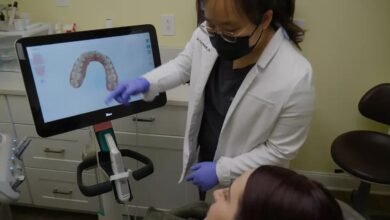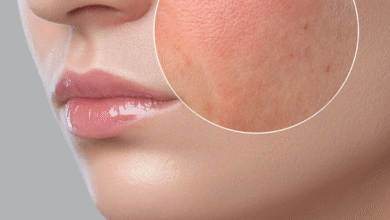How Invisalign Competitors Are Transforming Orthodontics
In a world where convenience reigns supreme and personalized experiences are the norm, the landscape of orthodontics is undergoing a revolutionary transformation. Gone are the days when achieving that perfect smile meant countless visits to an orthodontist and unsightly metal braces. Enter direct-to-consumer aligners—an innovative solution that’s not only making teeth straightening more accessible but also challenging established giants like Invisalign Competitors in ways we never imagined. From virtual consultations to at-home kits, these disruptors are reshaping how we think about dental care and empowering consumers to take control of their smiles from the comfort of their homes. Join us as we delve into this exciting evolution in orthodontics, exploring how these emerging Invisalign Competitors are changing the game for patients everywhere!
Introduction to Direct-to-Consumer Aligners
The world of orthodontics is witnessing a seismic shift. Gone are the days when traditional braces ruled the landscape and patients had to endure lengthy appointments, messy impressions, and inconvenient adjustments. Enter direct-to-consumer aligners—a game changer that’s making waves in dental care. With companies positioning themselves as formidable Invisalign competitors, people seeking a straighter smile now have more options than ever before. But what does this mean for the future of orthodontic treatment? Join us as we explore how these innovative solutions are transforming smiles across the globe while challenging conventional methods along the way.
Evolution of Orthodontics and the Rise of Invisalign Competitors
The field of orthodontics has undergone a remarkable transformation over the years. Traditional metal braces were once the go-to solution for crooked teeth, but patient preferences have shifted dramatically.
With advancements in technology and materials, clear aligners emerged as a game changer. Invisalign Competitors led this revolution by offering a discreet and comfortable alternative to traditional braces.
As demand grew, so did competition. New players entered the market with innovative approaches to aligner therapy. Brands like Smile Direct Club and Candid began catering directly to consumers, bypassing conventional dental visits.
These Invisalign competitors provide an accessible way for people seeking orthodontic treatment without lengthy appointments. The convenience factor resonates strongly with tech-savvy consumers eager to enhance their smiles from home.
This evolution reflects broader trends in healthcare, where direct-to-consumer models are increasingly popular across various sectors. Now patients can achieve results at their own pace while enjoying greater flexibility than ever before.
Also, read more A Comprehensive Guide to Invisalign Competitors
Comparison between Traditional Orthodontic Treatments and Direct-to-Consumer Aligners
Traditional orthodontic treatments often involve lengthy office visits and the expertise of a licensed orthodontist. Patients typically wear metal braces for months or even years, requiring regular adjustments to achieve their desired results.
In contrast, direct-to-consumer aligners offer a more streamlined approach. Consumers can order kits online and take impressions at home, eliminating the need for frequent appointments.
Cost is another key differentiator. Traditional methods can be quite expensive due to in-person care and treatment duration. Meanwhile, many aligner brands provide affordable options that appeal to budget-conscious consumers.
Convenience plays a significant role as well. With direct-to-consumer aligners, patients enjoy flexibility in their treatment schedules without compromising on comfort or aesthetics.
However, effectiveness varies between these two approaches. While some may find success with at-home kits, others might require professional oversight during complex cases—highlighting an essential distinction in outcomes.
- Cost
When it comes to cost, direct-to-consumer aligners present a compelling alternative to traditional orthodontic treatments. Typically, these at-home solutions are priced significantly lower than Invisalign Competitors and other conventional methods.
Patients can expect to spend anywhere from $1,000 to $2,500 for a complete treatment plan through various Invisalign Competitors. In contrast, traditional braces or in-office clear aligner systems often range between $3,000 and $8,000.
These savings appeal especially to budget-conscious individuals seeking teeth straightening options without the hefty price tag associated with dental visits.
Additionally, many companies offer flexible payment plans or financing options that make achieving a straighter smile even more accessible. This affordability has driven interest among those who may have previously shied away from orthodontics due to high costs.
With prices dropping and convenience rising, it’s no wonder that consumers are exploring alternatives outside of the dentist’s office.
- Convenience
One of the standout features of direct-to-consumer aligners is their incredible convenience. Instead of scheduling multiple appointments with an orthodontist, you can manage your treatment from home.
Many companies offer a simple online assessment to determine if you’re a candidate for clear aligners. Once you’re approved, impressions are taken at home using easy-to-follow kits sent directly to you. This flexibility eliminates the need for long waits in crowded waiting rooms.
Additionally, direct shipping means that once your aligners are ready, they arrive right at your doorstep. You can start your journey towards a straighter smile without ever leaving your house.
With many options available 24/7 via apps or customer service chatlines, help is just a click away. Whether it’s tracking progress or asking questions about wear time, assistance feels more accessible than ever before.
- Effectiveness
When considering effectiveness, many potential users often wonder how direct-to-consumer aligners stack up against traditional orthodontics. The primary goal remains the same: achieving a straighter smile.
Direct-to-consumer options typically use advanced technology to create custom treatment plans based on 3D scans of your teeth. This innovation allows for more tailored solutions that can be surprisingly effective. Many users report satisfaction with their end results after following the prescribed regimen closely.
However, it’s essential to recognize that not everyone is a candidate for these aligners. Severe cases often require professional intervention and in-person adjustments that at-home treatments simply can’t provide.
While many find success with direct methods, others may face challenges due to less oversight and monitoring throughout their treatment journey. Each individual experience varies widely depending on specific dental needs and conditions.
Also, read more Exploring the World of Invisalign Competitors.
The Controversy Surrounding Direct-to-Consumer Aligners
The rise of direct-to-consumer aligners has sparked significant debate within the orthodontic community. A primary concern is the absence of in-person consultations. Traditional treatments involve regular check-ups, allowing for real-time adjustments and professional oversight.
Without these face-to-face interactions, patients may miss vital assessments that can impact treatment effectiveness. The risk increases when complications arise during alignment processes—issues that may go unnoticed without expert supervision.
Moreover, many consumers feel tempted by the allure of convenience and cost savings. However, they might not fully grasp what they could be sacrificing in terms of care quality.
Orthodontists worry about potential long-term consequences as well. Misalignment issues or inadequate monitoring could lead to more complex dental problems down the line—a reality few consider before opting for a DIY approach to their smiles.
- Lack of In-Person Consultations and Monitoring by an Orthodontist
The absence of in-person consultations is one of the biggest debates surrounding direct-to-consumer aligners. Traditional orthodontics typically involves regular visits to ensure treatment is progressing as expected.
Without these face-to-face appointments, patients may miss out on crucial guidance. An orthodontist’s experience helps identify potential issues early, which can prevent complications later on.
Many consumers find it appealing to skip the waiting room and lengthy appointments. However, this convenience comes at a cost. The lack of professional oversight means that adjustments might not be made promptly or accurately.
Some people are unaware that their dental health requires more than just shifting teeth. It encompasses jaw alignment and overall oral hygiene too—elements best monitored by an expert in person. This gap leaves some patients vulnerable to misalignment or ineffective treatment without realizing it until it’s too late.
- Potential Risks and Complications
While direct-to-consumer aligners offer convenience and affordability, they come with potential risks. One significant concern is the absence of in-person evaluations by an orthodontist. This lack of professional oversight can lead to improper fitting or misalignment.
Without regular monitoring, patients may not receive timely adjustments if complications arise. Issues like tooth movement or discomfort might go unaddressed until they escalate.
Additionally, some users risk exacerbating pre-existing dental problems. Conditions such as gum disease or cavities require professional attention before any orthodontic treatment begins.
There’s also the possibility of ending up with unsatisfactory results. A well-trained orthodontist ensures that each step aligns with your unique dental needs.
These factors highlight the importance of considering all aspects when opting for these alternative options in orthodontics. Awareness is key to making informed decisions about your smile transformation journey.
Also, read more Exploring the Top Invisalign Competitors for Clear Aligners
Success Stories
Success stories abound in the world of direct-to-consumer aligners, showcasing how these products have transformed smiles and lives. Many individuals have shared their positive experiences with Invisalign competitors. They highlight not only the aesthetic improvements but also increased confidence and self-esteem.
For instance, Sarah, a busy working professional, struggled to find time for traditional orthodontic appointments. After researching her options, she decided on a direct-to-consumer aligner service. The process was straightforward: an easy online consultation led to receiving customized trays at home. Within months, her teeth straightened beautifully without constant trips to an orthodontist’s office.
Similarly, James had been hesitant about braces due to his age and lifestyle. He opted for a competitor of Invisalign Competitors that offered flexible treatment plans tailored for adults like him. With discreet aligners that he could wear day or night, he found it easy to maintain his social life while achieving the smile he’d always wanted.
These success stories demonstrate that many people are happy with their choices outside of traditional orthodontics. For those who seek convenience alongside effective results—direct-to-consumer aligners can be an appealing option worth exploring further as they continue transforming orthodontics into a more accessible field.
Read more website globalalternativenews.com



